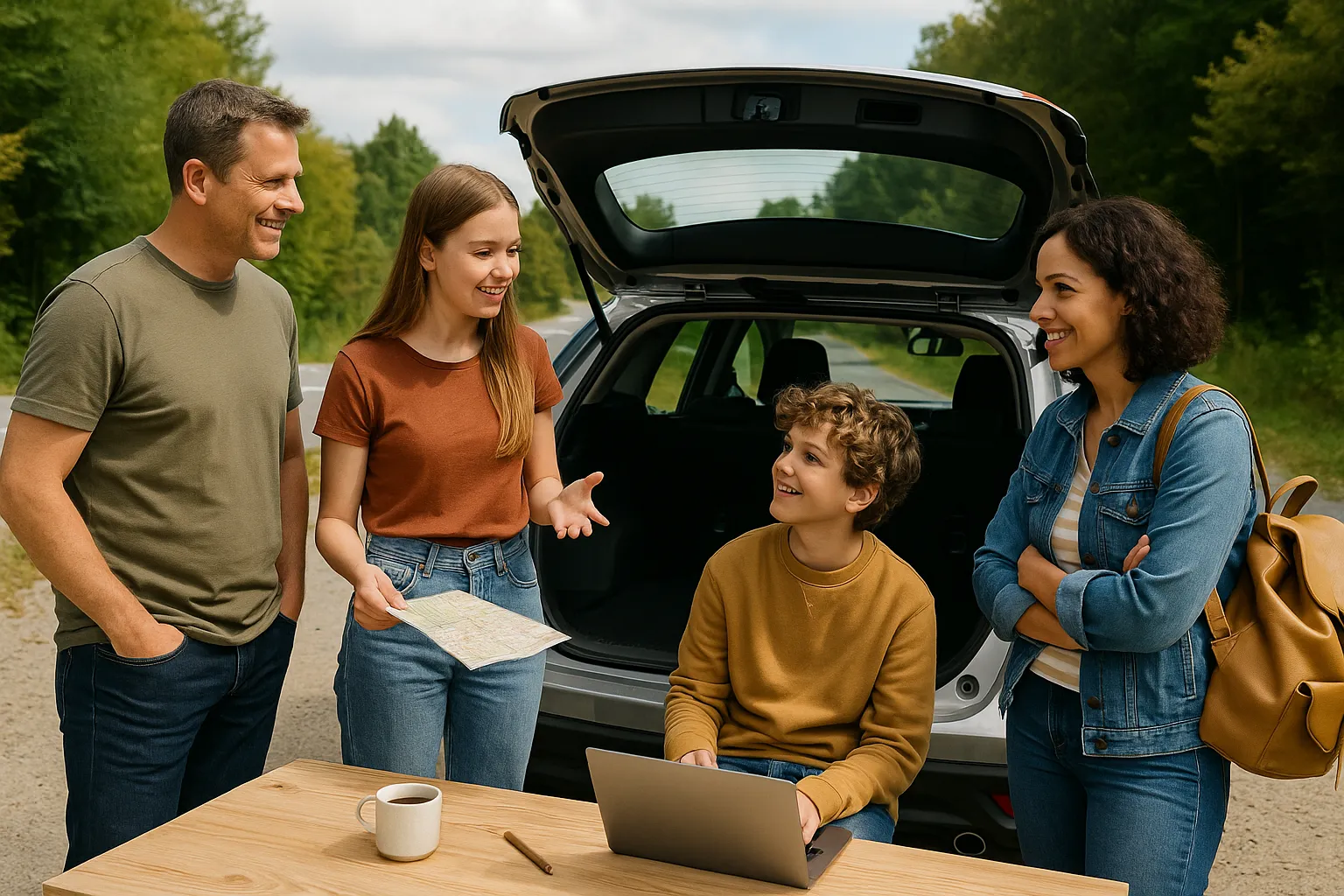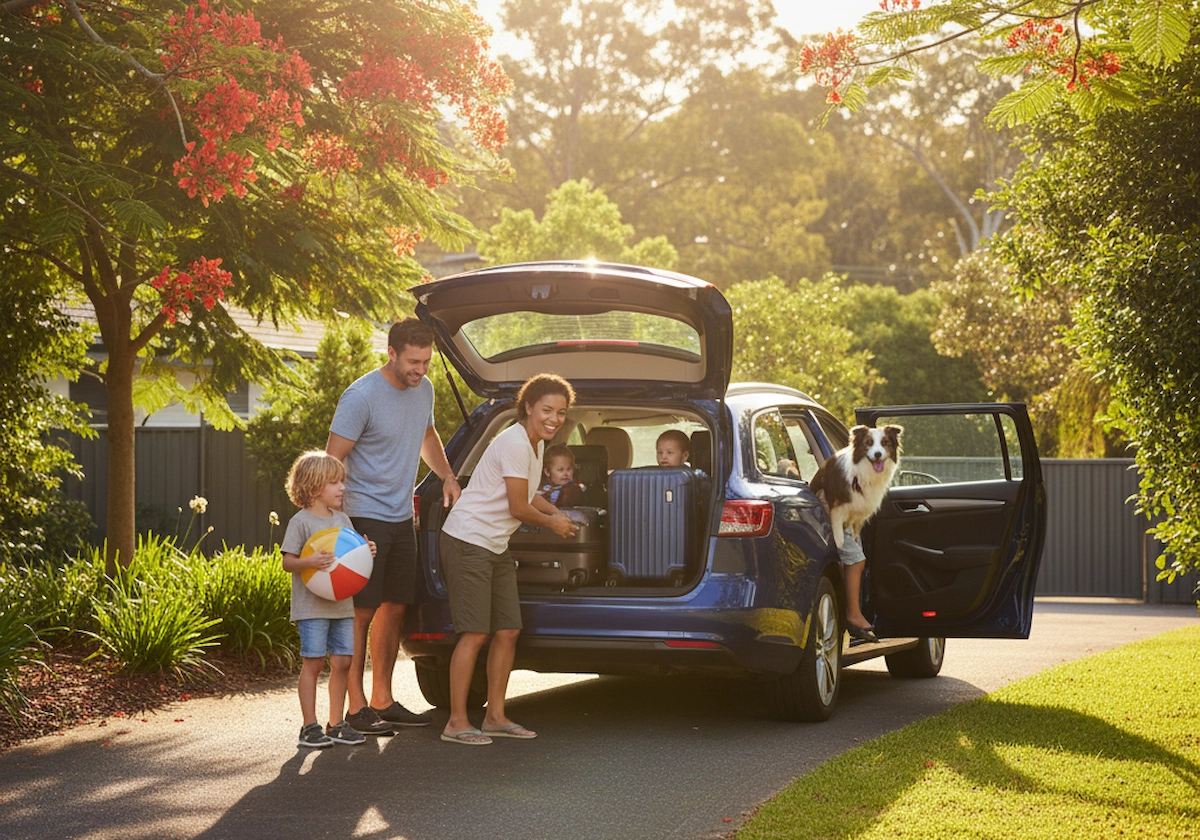Love a good road trip but hate the idea of leaving a trail of plastic and petrol behind you? That same thought runs through the minds of thousands of travellers every year, all looking for a way to enjoy the journey without harming the places they love.
You don’t need to give up freedom or fun to make better choices. Exploring Brisbane’s scenic routes can be just as exciting when you choose a fuel-efficient car, visit locally owned eco-stops, and cut back on waste.
This is your travel guide for Brisbane that focuses on reducing emissions, supporting local communities, and enjoying nature responsibly.
We’ll walk you through how to rent the right vehicle, choose your route carefully, and pick sustainable travel options that align with your values.
Ready to plan a trip that feels good and does good? Let’s get into it.
What Does Sustainable Travel Mean?
Sustainable travel means paying attention to how your trip touches the environment, local communities, and culture. The places you visit feel the impact of every choice.
Where you stay, what you eat, and how you move all play a part. If you truly care about nature, you should stay mindful on the road and travel sustainably.
Drawing from our experience, the most sustainable travellers are those who take every detail into account. They look for low-impact ways to explore and choose businesses that give back to the community.
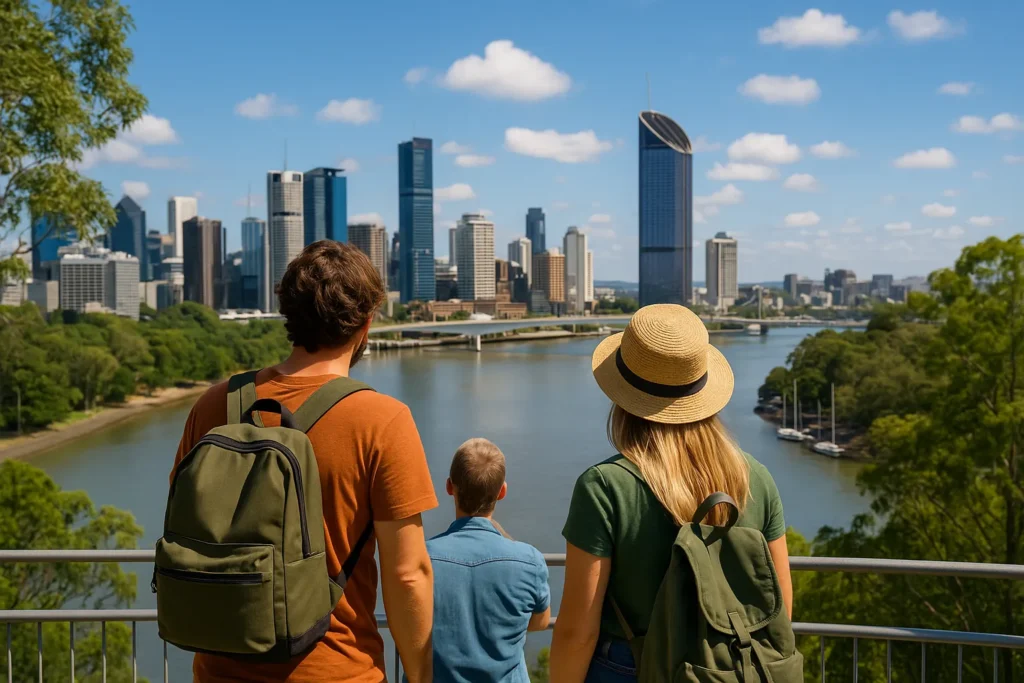
Sustainable tourism is most effective when it combines comfort with responsibility. Brisbane is a great place to try this approach because it’s enriched with nature, local culture, and easy-to-access eco-friendly options.
When you travel responsibly, you directly contribute to protecting nature, support local jobs, and avoid adding extra pressure to busy areas.
Here are some easy ways to do it:
- Cut down on unnecessary transport: Walk when you can. It’s often more enjoyable than driving or taking the bus. Avoiding buses, bikes, or other modes of transport helps reduce fuel use and lets you experience more along the way. But if you’re carrying heavy bags, it’s difficult to walk long distances. In that case, apps like Translink make public transport easily findable in Brisbane.
- Be mindful outdoors: Bring a reusable water bottle, tote bag, and cutlery so you don’t need to use plastic. Plastic items often get left behind, and even small bits can hurt animals or end up in rivers and parks. We suggest you to stay on the walking paths to avoid damaging plants, and keep a safe distance from wildlife so they don’t get scared or pushed out of their home.
A 2022 study found that tourism activities make up around 8% of global greenhouse gas emissions. And the apparent reason behind this dreadful incident is transport.
Let’s look at how you can make better travel choices with the right kind of car.
Renting a Car: Eco-Friendly Options in Brisbane
Planning a road trip through Brisbane? Then your first priority will be choosing the right car. So, what makes a car “right” for this kind of trip?
Well, if you’re thinking about fuel use, pollution, and how far you can go without stopping every few hours, your best bet is a hybrid or electric vehicle.
Petrol-heavy cars burn through fuel quickly and release more emissions, which adds up fast on long drives. That’s not great for either the planet or your wallet.
Luckily, finding a greener option is easier now. Many rental companies around Brisbane have added hybrids and EVs to their fleets, and the demand for them keeps growing.
If you want the best options, it’s smart to book early before the trip. Popular models tend to go first, especially if you’re heading out across Queensland for a few days. Sounds like a win all around.
Queensland is doing its part too. The state is investing in more charging stations to support electric travel. You’ll find them in shopping centres, car parks, and even near some national parks. Check out the Zero Emission Vehicle Strategy to find out more.
If you’re driving an EV, apps like PlugShare and Chargefox make it easy to plan your charging stops. They show nearby stations, plug types, and real-time availability so you’re never caught off guard.
Once you’ve sorted your car, the rest of your Brisbane travel will be hassle-free. So, have a clear plan in the very beginning of the trip, and grab the chance to be kinder to the environment.
Eco-Friendly Itineraries Around Brisbane
Tired of crowded lookouts and long queues just to snap the same photo as everyone else? We have the solution for this problem: choose a quiet road to move forward. Choosing a quieter route not only saves you the stress, it also helps protect the places being loved to death.
Brisbane has a mix of lesser-known gems where nature still feels raw. These areas offer natural beauty, friendly locals, and eco-friendly stays that let you enjoy your trip without harming the environment.
Some of the popular areas are:
- Redlands Coast and North Stradbroke Island (Minjerribah): Minjerribah is just a short drive and ferry ride from Brisbane. You can relax on quiet beaches, walk peaceful bush trails, and stay in eco lodges that use solar power and recycle water. If you join a local guide, they can show you hidden spots and share stories that help you see the land through a different lens.
- Tamborine Mountain: This place sits quietly in the hinterland, just far enough to feel like a proper escape. You can stroll along shady walking tracks, stop at cafés serving fresh local food, and stay in cosy cabins tucked among the trees. Many places here run on solar, collect rainwater, and even grow their own herbs. If you’re craving some quiet and fresh air, this spot makes it easy to slow down.
- Lockyer Valley: This region is calm and quiet, with farm tours, markets, and wide open spaces for a relaxed road trip. You can visit local farms that focus on growing food in ways that care for the land. It’s an adorable place for a picnic or a slow afternoon exploring as well.

These eco-conscious efforts are already happening in and around Brisbane. You’ll be glad to hear that at Minjerribah Camping on North Stradbroke Island, they’ve removed single-use plastics and encourage visitors to bring reusable items.
They also work with the Quandamooka people to run cultural and educational experiences that support the local community.
If you want your trip to mean something more, the next section will show how tourism can make a positive difference.
What is Sustainable Tourism?
Yes, you heard it right. Sustainable tourism, not sustainable tour. The core difference between them is that tourism looks at the bigger picture. It considers how your visit touches the environment, the people, and the local way of life.
If you’ve ever visited a place and thought, “I hope this never changes,” then you’re already on the right track. Sustainable tourism means looking after the places we love so they stay just as special for the next person who visits.
The clean air, the quiet forests, and the stories shared by locals, everything deserves a good return from you.
Here’s what sustainable tourism can look like:
- Spend locally: Visit farmers markets, small shops, and book with local guides. That snack you grab or handmade item you pick up helps someone keep their business going and supports the community.
- Use low-impact transport: Walk, cycle, or take public transport when it makes sense. You’ll cut down pollution, stretch your legs, and likely spot places you’d miss from inside a car.
- Stay in eco-accredited places: These places manage energy, water, and waste more carefully. Many use solar, compost food scraps, and ditch single-use plastics. Look for trusted certifications like EcoTourism Australia or EarthCheck.
- Travel outside peak seasons: Visiting during quieter months means fewer crowds and more peaceful experiences. It gives destinations a break and spreads tourism more evenly throughout the year.
Pro tip: Don’t stress about getting it perfect. Pick one or two easy changes that fit your plans, like catching the train instead of driving, or staying somewhere with eco-certification. It’s those small steps that start to turn into better habits, and they make your trip feel more rewarding.
And hey, if someone calls you a “tourist,” you can proudly reply, “Yes, but the sustainable kind.” Travel that does good feels good, and that’s something worth packing with you.
Ecotourism: What Is It?
Ecotourism is a kind of travel that’s focused on nature, learning, and respect. It means taking your time, being curious, and exploring in a way that’s gentle on the environment. Ecotourism encourages you to get to know the place you’re visiting and support the people who care for it.
These experiences are usually small and run by locals who know the land well. You might go on a guided bushwalk, learn about native plants and animals, or take part in a conservation project. It’s the kind of travel that sticks with you, because it’s personal and meaningful.
What makes ecotourism different is the care behind it. These trips are designed to protect nature, support communities, and help you see why that matters. Instead of rushing from one attraction to the next, you get to slow down, listen, and take it all in.
Now that you’ve got a feel for what ecotourism looks like, let’s talk about how it connects with you. What does being an eco-tourist mean?
Are You an Eco-Tourist?
Someone who travels with a bit more care and awareness is an eco-tourist. So, answer yourself now!
Eco-toursists frequently think about the long-term impact of their choices, not just for today. You don’t need to change everything in this world. The point is to travel in a way that shows respect and awareness.
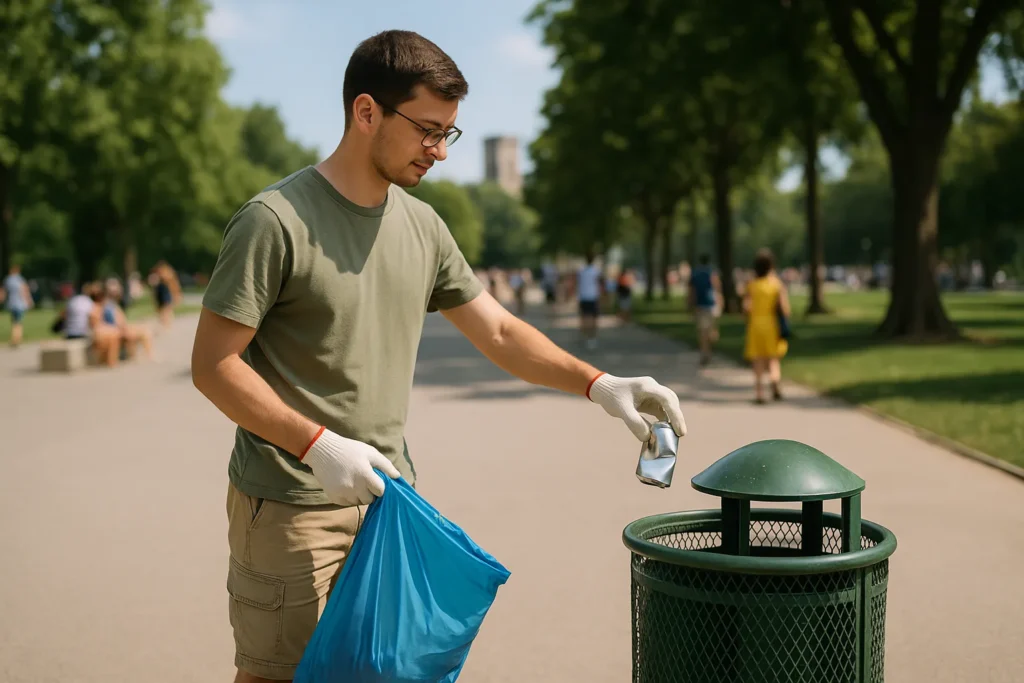
Eco-tourists tend to think ahead. They often ask simple questions like, “Will this help or harm the place I’m visiting?” These questions change how they explore, spend, and connect.
Here are a few things eco tourists often do:
- Book ethical wildlife experiences where animals are left undisturbed in their natural habitat
- Take public transport or walk instead of hiring private cars when it’s practical
- Join clean-up events or tree-planting days while travelling
- Learn a few local phrases as a way to show respect and connect more deeply
- Share their travel experiences mindfully by highlighting what they learned and saw
Our findings show that eco tourists mainly focus on doing what they can, staying curious, and making choices that feel right for the places they’re visiting.
If you care about where your money goes, how your travel affects others, and what kind of impact you leave behind, you’re already thinking like one.
Next, we’ll look at practical ways to bring all this together through simple travel tips you can use on your next trip.
Sustainable Travel Tips
Sustainable travel is how you move, what you use, and who you support while you’re there. It means being a bit more thoughtful about your choices.
Start small, do what feels right, and keep things simple. The following easy changes can make your trip feel better and do some good at the same time:
- Cut back on flights when possible: Try trains, buses, or carpooling for short routes. These options usually create fewer emissions and let you enjoy the scenery. Plus, they’re often cheaper and more relaxing than airport lines. You’ll also avoid airport delays and baggage headaches. And in many parts of Australia, the journey itself can be just as scenic as the destination.
- Use digital instead of paper: Save your boarding passes, tickets, and maps digitally. It reduces paper waste and makes things easier to keep track of during your trip. You’re also less likely to lose important paperwork. Most apps now even work offline, which helps if you’re low on data or off the grid.
- Pick activities that give back: These events are a great way to give back while you’re on the road. They often take just an hour or two and help keep natural areas clean for everyone. You might meet locals or fellow travellers while doing something that feels genuinely worthwhile. It’s also a great way to slow down and notice the little things.
- Spend more time in one place: Slowing down means less fuel use and less stress. You’ll also get to know the area better and enjoy more meaningful experiences with locals. Also, fewer check-ins and travel days mean more time to relax. This kind of pace gives you space to explore deeper, not just wider.
- Leave places better than you found them: Stick to marked trails, carry out your rubbish, and respect wildlife from a distance. These small habits go a long way in protecting nature. Even things like avoiding loud music or turning off lights at night help. Think of it as being a good guest wherever you go.
The more you travel this way, the easier it gets. You might notice new things you would have missed before. The people you meet might leave a lasting impression. And in the end, your trip becomes something you feel proud of.
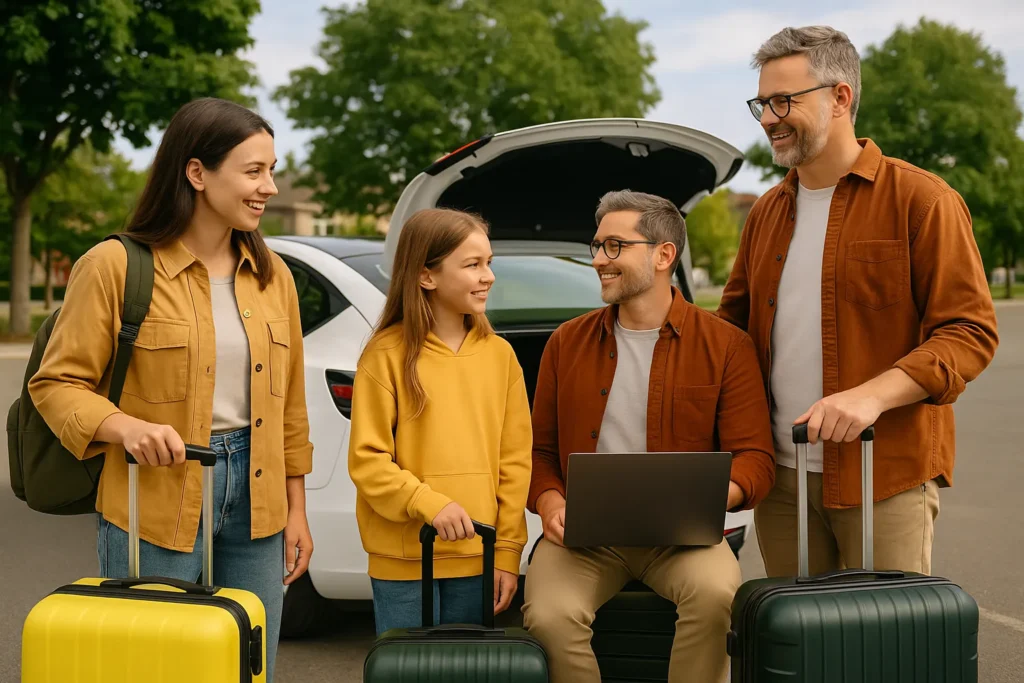
Travel That Leaves a Lasting Positive Mark
By now, you’ve seen how easy it is to make your road trip more sustainable. Starting with choosing a greener vehicle, supporting local communities, and planning routes that protect natural spaces. It’s about being aware, prepared, and open to better ways of exploring the world around you.
When you travel this way, you become part of a growing movement of people who care about the places they go and the impact they leave behind.
If you’re ready to explore sustainable travel options, Glapacked is a great place to start. You’ll find green car rentals, eco-minded experiences around Brisbane, and smart tips to help you hit the road with confidence.
Let your next road trip be one that gives back. You’ll enjoy it more, and so will the places you visit.

